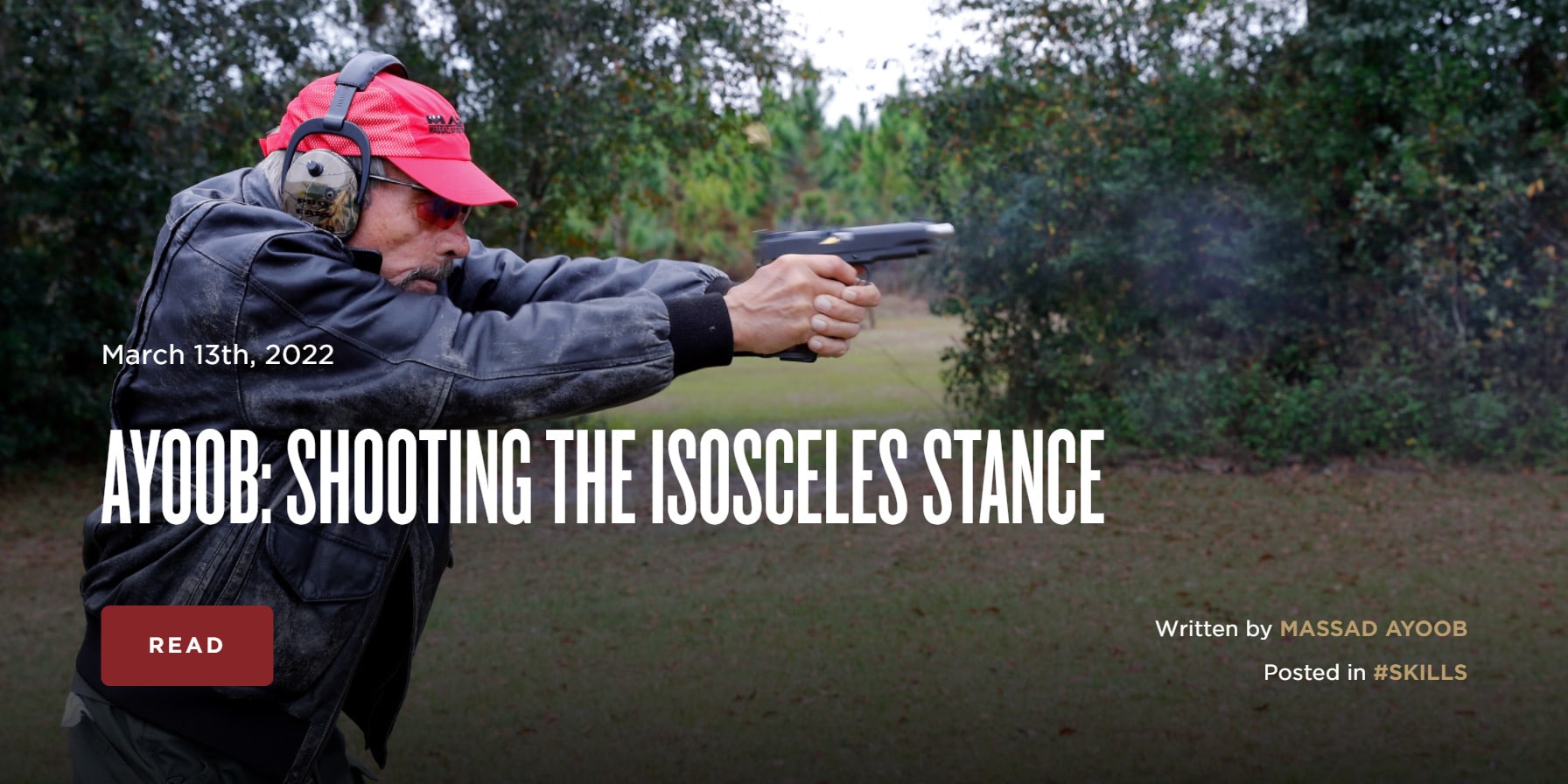Hello all, here is today's article posted on TheArmoryLife.com. It is titled "Ayoob: Shooting the Isosceles Stance" and can be found at https://www.thearmorylife.com/ayoob-shooting-the-isosceles-stance/.



Especially when I first stand up in the morning.........I'm just happy to be able to stand , let alone assume some sort of stance.
Just finished reading all your articles on stance. I've been a follower of you for years. I read your articles, I believe in Combat, regarding legal issues surrounding firearm use of force to be some of the best, if not the best, I've ever read. I began USPSA competitive shooting in my 50s, and as is too typical. I was exposed early in life to firearms and found it enjoyable. Gasoline and perfume distracted me as a teenager along with school, sports, college, a 20-year military career, wife, family, kids in college, and life in general. Finally, disposable income and time increased, and I became involved in USPSA shooting in my 50s. I was fortunate to live near where one of the best USPSA/IPSC competitors lived and took two classes with him early in my USPSA shooting experience – Ron Avery. Ron constantly worked at every aspect of his shooting. He tuned his firearm constantly, and even when he found what worked best, would experiment with changes. Ron always looked for a better way. Driven is probably a better term for his approach. He wanted to be the best and studied every aspect of IPSC/USPSA shooting. Ron never feared to experiment, changing techniques, keeping what worked, and dropping what didn't. The same for every aspect of the sport - draw, movement, stance, physical fitness, diet, everything. He taught the isosceles stance but with some differences I believe are significant. I will do my best to convey those differences here. Feet. As you said, shoulder width or slightly wider. Whichever leg you naturally wanted slightly to the rear of the other; however, not as far as your pictures show and most pictures of others discussing the isosceles stance. A key difference is the rearmost foot depended on which direction you needed to move to reach the next shooting position. Weight. Forward. I believe he suggested what you stated - ~60% - but I do not recall the exact number now. Legs. Knees slightly bent so they would act as shock absorbers and not a rigid pole. Hips/waist: Slight bend forward at the waist. Head. Forward. This has a huge effect on the center of gravity. Shoulders. Square to the target as close to a natural point of aim as you can get. The line up on target, close your eyes, transition firearm 30-45 degrees left-right and back to center then open your eyes. If not back on target, adjust feet and shoulders to align with the target and repeat. Stop when you end the transitions, and you are on target. Arms. Straight, however, most pictures I see of Isosceles stance show the elbows pointed more outward. I believe Ron wanted the elbow rotated slightly downward and very slightly bent.Hello all, here is today's article posted on TheArmoryLife.com. It is titled "Ayoob: Shooting the Isosceles Stance" and can be found at https://www.thearmorylife.com/ayoob-shooting-the-isosceles-stance/.

